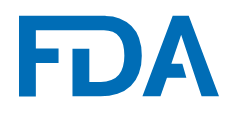FDA Dataset Helps Firms Scrutinize Third-Party Chemistry Labs
Written by: Phillip J. Minnick, Ph.D.
Medical devices that contact the human body undergo biocompatibility safety assessments prior to market release, including tests for physiochemical properties. The Food and Drug Administration’s (FDA) Center for Devices and Radiological Health (CDRH) recently released a dataset to assist medical device firms in this process. The information addresses capabilities of third-party analytical chemistry labs. The CDRH release that accompanied the dataset explains that one option for biocompatibility testing is non-targeted extraction studies to detect and quantify chemicals that may be leached by a medical device during use, followed by a toxicological risk assessment (TRA) to determine whether any of the chemicals identified in the study are unsafe. According to the CDHR release, the overall quality of the TRA is therefore “dependent on the sensitivity of the analytical chemistry method used to detect and quantify chemicals that may be present following extraction from a medical device.”

The CDRH dataset helps to increase the consistency and transparency of biocompatibility assessment methods by providing a characterization by gas chromatography of more than 100 chemicals having a broad range physiochemical properties. This characterization includes the Relative Response Factor (RRF) for each chemical, which is a way of characterizing the detectability of chemicals. A showing that the detectability of chemicals across a broad range physiochemical properties by an analytical chemistry lab is similar to the detectability of chemicals by the CDRH increases the confidence that the lab identified all relevant chemicals in the study.
The CDRH dataset follows an FDA Letter released earlier this year reporting on an alarming trend showing that an increasing number of third-party test labs generate fabricated, duplicated, or otherwise unreliable testing data. As Knobbe has previously discussed, the FDA Letter further warns that “it is incumbent on device firms to take proactive steps to qualify third-party labs and to closely scrutinize all testing data that a firm itself does not perform, especially relating to biocompatibility and other testing.” Tools like the CDRH dataset may offer firms one basis for such scrutiny.